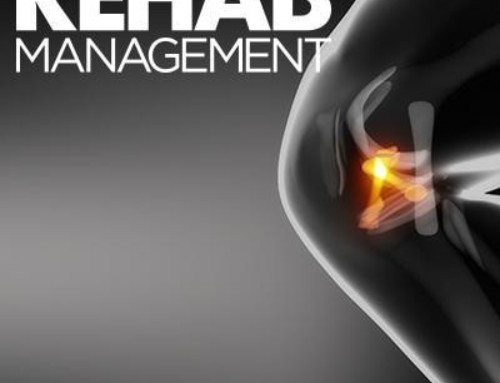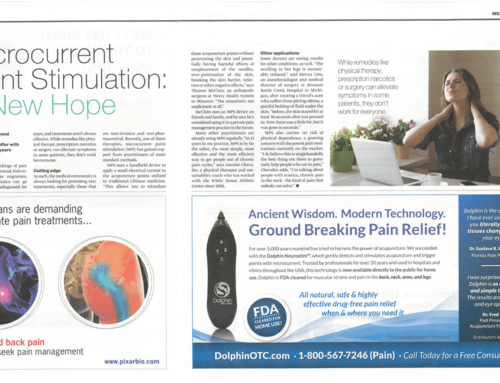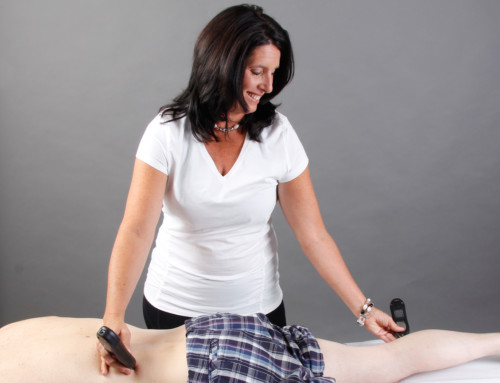Microcurrent Point Stimulation (MPS) Therapy is a truly integrative therapy specifically designed for the treatment of chronic or acute soft tissue pain. MPS applies brief, concentrated direct current (DC) microcurrent impulses to motor, trigger and acupuncture points that gently relax muscles, calm the nervous system and release endorphins, the body’s natural pain killers. This multi-pronged simultaneous treatment of the body’s nervous, muscle and endocrine systems with DC current is the reason why MPS works so effectively with many chronic pain conditions.
Acupuncture and chiropractic
The use of acupuncture dates back more than 3,000 years in Chinese history, yet it remains much of a mystery to Western medicine concerning its effectiveness for pain relief and a broad spectrum of other somatic and visceral disorders.
From a traditional approach, acupuncture is thought to work by restoring the body’s flow of innate healing forces. In the optimal state of health, these innate forces flow unimpeded through the system of meridian lines. Disease and pain are byproducts of an impeded or blocked innate flow of energy. Acupuncture accesses this flow through various acupuncture points, and restoration of the flow theoretically restores one to an ideal state of health.
Similarly, in chiropractic philosophy, optimal health depends on the unimpeded flow of the internal “life force.” Subluxations or spinal dyskinesias create sources of potential interference that may affect the organism’s ability to react to its environment. Removal of these blockages reduces the life-force interference, allowing the body’s innate intelligence to react maximally, bringing about an increased state of health.
Philosophically, consider the possibility that blockages in the flow of a patient’s “life force” may be similar in effect to blockages in acupuncture’s energetic systems. If this is true, stimulation of key acupuncture points may be able to produce similar healing effects as spinal manipulation, or may be integrated with manipulation to significantly improve patient outcomes.
Why microcurrent?
There are two general types of electric current: the back-and-forth flow of alternating current (AC), which powers most of our household appliances and traditional TENS (Transcutaneous Electro Nerve Stimulator) devices, and DC, which flows in one direction and mirrors the human nervous system. The Biomedical Engineering Handbook states, “DC current heals, AC current inhibits.”1
The author of The Body Electric, Robert Becker, goes further in stating, “the body’s nervous system runs on DC current … no subsequent healing of any injury may occur without DC stimulation.”2
Point stimulation
Microcurrent is optimally applied via direct point stimulation, not with electrode pads. It allows for precise targeting of treatment points with low amperage stimulation for therapeutic outcomes. The stimulation mimics the therapeutic effects of traditional acupuncture, providing pain relief to patients. The application of microcurrent to acupuncture and myofascial trigger points (MTP’s) is MPS Therapy.
Non-invasive MPS permits easy integration of several potent pain-relieving therapies (acupuncture and neural therapy), into clinical or home settings.
Dr. Jay P. Shah, MD, of the National Institute of Health, stumbled upon MPS to relieve his own pain. He says he’s used it daily for some 15 years to treat clients with neck, shoulder, back and other soft-tissue pain.
A pain specialist by training, Shah has also studied acupuncture and finds that MPS offers many of the same advantages in relaxing muscles to ease pain.
“It’s a wonderful tool for patients to treat themselves,” Shah says. “
Since most soft-tissue pain is controlled by the autonomic nervous system, many difficult disorders often respond exceptionally well to this approach, including:
- Back and neck pain, whiplash, TMJ/TMD
- Fibromyalgia, migraines, headaches
- Sports injuries, carpal tunnel, plantar fasciitis
- Frozen shoulder, post-operative pain
- Diabetic Neuropathy pain
- Shingles and scar pain
- Radiculopathy or nerve root entrapment
According to Western medicine, there are three categories of pain: nociception, inflammation and neuropathy (or radiculopathy). Western pain physicians recognize that radiculopathy is a primary source for the development of chronic pain.
Radiculopathy is often due to muscle shortening. This occurs when muscles are saturated with high concentrations of acetylcholine (ACH), and a motor impulse acts upon the muscle. Muscles then contract, remain contracted, and electrically depolarize.
If this shortened muscle is not released, it can distort and misalign the skeletal system. If the muscle that is shortened is a primary muscle, such as the piriformis or ilieo psoas, the results can be misalignment of the core of the body followed by the spine and the entire skeletal system.
Nerve roots get pinched and compressed by the shortened paraspinal muscles. This is often the result of a poor lifestyle, bad ergonomics, traumatic injuries, or congenital factors. The tissues and organs innervated by that nerve root can be adversely effected. According to Cannon’s Law of Denervation, any reduction in the flow of motor impulses will cause abnormal functioning in the receptor organ or tissue. Radiculopathy is the one reason why many physicians inject paraspinal muscles for a relief of extremity pain.
Therefore, releasing the paraspinal erector spinae muscles at the spinous process interspaces of the levels innervating the condition can clearly have a beneficial effect on all forms of pain.
MPS Research
In one study, when MPS was applied to patients with chronic pain, the following outcomes were observed:
MPS applied to the lower back (called the “standard protocol”) produced 70 percent pain relief after one session (n = 221 patients), which lasted five or more days on average.
These results are consistent with a recent Florida Hospital rehab study, which compared two standardized patient groups: one group (N = 43) applied TENS and the other applying MPS (N=43). The MPS therapy group had significantly greater reduction in pain (80 percent versus 50 percent) than the traditional TENS modality group.
“We are seeing our patient pain levels drop from seven to eight (on a scale of 10) down to one or two in just a few treatments. MPS more than doubles our outcomes that we used to receive from the combination of all traditional physical therapy modalities put together,” says Mitch Freed, MD, a regional medical director in Florida.
While there is strong clinical evidence to support the application of DC microcurrent stimulation for pain relief, investigate MPS for what it really is: a cost effective, integrative approach to naturally relieving pain.
Tamra Ellis is a licensed occupational therapist and is the founder of the Centre for Rehabilitation and Health in Canada, which collaborates regularly with Acumed Medical. Ellis is also co-author of a text on MPS and is a certified instructor of MPS for the Introductory Level Certification. For more info on MPS therapy, call 800-567-7246 (PAIN) or visit www.dolphinmps.com.
References:
1 Bronzino, JD, ed. The Biomedical Engineering Handbook, Third Edition. Boca Raton, FL: CRC Press; 2006.
2 Becker, R, Seldon G. The Body Electric: Electromagnetism and the Foundation of Life. New York, NY: William Morrow Paperbacks; 1998.
By Tamra Ellis
Originally published in Chiropractic Economics, Summer 2013







Leave A Comment